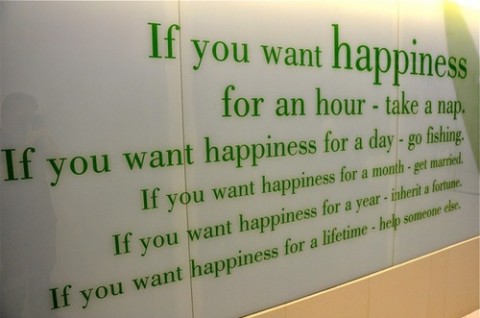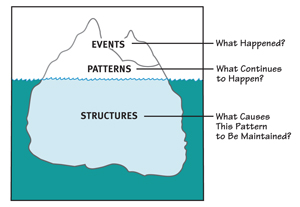Tag Archive: positivity
July 30, 2021
We recently wrapped up a series of workshops for members of the Wallace Center‘s Food Systems Leadership Network focused on Organizational Change for Racial Justice (OCRJ), which was adapted from our IISC workshop Advancing Racial Justice in Organizations (ARJ). This offer was made by IISC under the auspices of The Wallace Center’s CORE Project, and with generous support from the Garfield Foundation. It was a wonderful and challenging experience for our collective Wallace/IISC team, as we welcomed representatives from 21 different food systems-focused organizations from around the US, along with a talented group of 16 small group facilitators who had participated in a customized Fundamentals of Facilitation for Racial Justice Work (FFRJW). That made for over 80 participants over 4 four-hour sessions, that took people from fundamental DEIJ concepts to change process design work to anticipating inevitable roadblocks and detours. We deeply appreciated how people showed up and went along for the ride, giving us helpful feedback along the way, and ultimately sharing all that they had taken that sets them up with a stronger foundation to do the work.
As we wrapped up our final session, my colleague Erika Strong shared an excerpt from a piece by Herbert A. Shephard, “Rules of Thumb for Change Agents,” which appeared in the OD Practitioner in December 1984. It has appeared by permission in our course Collaborative Social Change: Designing for Impact in a Networked World. And we now include it in many of our racial justice trainings as a way of bringing focus back from systems to individual and groups of change agents, and what can support them in doing this work over the long haul. These are re-shared below with some additional commentary.
- Stay alive, literally and figuratively. The work is indeed long and often hard. And it can also have its moments of joy and satisfaction, as we experience connection and development of different kinds. But this does not happen if we are not enlivened, or breathing, in a deeper sense. Self and community care is crucial.
- Start where the system is. This is about getting clear-eyed about where things actually are, which comes not just from an initial assessment, but over time, especially as people try to do things differently. Action is certainly about trying to make change, and it is also about nudging living organizational/social systems to see how they respond, so that we better understand defenses, patterns, logic, etc. Starting from where the system is not can waste valuable energy.
- Speaking of energy conservation, another guideline is to Never work uphill.
- Don’t build hills as you go. Don’t make the work more difficult than it needs to be, or too insurmountable for people. It is not easy to begin with, requires stretches, but putting people in panic or overwhelm mode does not help. Use accessible language, make clear asks, try not to overly trigger people’s defenses.
- Work in the most promising areas. Look for early wins. Because this always inspires confidence, that change is possible, and it can build a sense of accomplishment and community. Don’t try and tackle it all. We encourage people to start with a couple of areas in their organization/community/network where you can start and then build/connect.
- Build capacity. Don’t go it alone. Build your team! As Maya Angelou once wrote, “Nobody, but nobody, can make it out here alone.” Start with your core/design/equity team. Let them become a model for the rest of the organization. And share transparently about how you are working, as there is much to be gained from trying to create network effects through this work.
- Don’t over-organize. Don’t fall into the trap of the perfect becoming the enemy of the good. Yes, get necessary supports in place. Yes, do some initial assessment and grounding, and then know that a lot of the learning will come through acting, trying out different things, and iterating as you go. And you want to leave place for others to add their ideas and initiative.
- Be bold. Doing this will send important signals to those around you, be a “chaotic attractor” of sorts, will help you identify allies and some of the strongest blockers. And given the many roadblocks that come up, boldness is an important energetic counter, especially when held by an even small but mighty group.
- Innovation requires a good idea, initiative, and a few friends. The idea for change does not need to be perfect, it needs to be “good enough” (reasonably well informed), have legs (can be put into action) and people who are willing to try it out.
- Load experiments for success. This connects to much of what appears above, along with being as clear-eyed as possible about what is actually happening in any given system in any given moment.
- Light many fires. Don’t rely on only one intervention or one place in a system to create change. A few interventions in different places, especially when connected, can help create ripples of change over time.
- Keep an optimistic bias. Negativity bias is real, and can help us to be both realistic and to survive. And it can also quickly kill ideas and initiatives outside of “the norm.” Part of the value of finding a few friends to move things forward is developing a core group that can maintain and spread an attitude of positivity and possibility.
- Capture the moment. Timing may or may not be everything, yet is can matter immensely. Staying tuned in, in both a collective and holistic sense, to what is changing and where energy might be shifting and effort applied is key to being able to nudge living systems in more just, prosocial, and sustainable directions. And it turns out, there is something of a science around “when” decisions.
This is not an exhaustive list, by any means, and we are always eager to hear what you would add.
December 10, 2014
“What’s most systemic is personal . . . and interpersonal.”
– rift on a Peter Senge quote

At IISC, one of the three core lenses that we bring to our collaborative capacity building for social change work is love as a force for social transformation. How this lens impacts what we do as practitioners depends on context, though often it comes down to ensuring that there is time for people in the collaborative change efforts we support to connect on a personal and interpersonal level. One way to do this is to invite people to share stories and do this beyond the parameters for their professionally defined roles. I did this recently with a group and as is often the case, there were a few areas of resistance in the collective body. “Why are we doing this?” asked someone with a hint of consternation. That became my opening. Here is what I offer as a response to discomfort around what some people call “touchy feely” exercises.
Why are we doing this?
- In general terms, to expand collective potential.
- To help each of us to be more fully seen and appreciated for who we are, beyond abstractions and implicit assumptions. When people do not feel seen or appreciated they can disengage, or “act out” to get the attention they want.
- To deepen connection, build trust and increase social velocity.
- To test and stretch the boundaries of “appropriate” and “legitimate” ways of knowing and being with one another. Otherwise people can default to ways that privilege those most comfortable with certain ways of being (often strictly professional and cerebral).
- To grow “positivity” – that is, to expand the overall collectively felt sense of positive emotions (which includes pride related to the demonstrated ability to have and hold difficult conversations). Positivity has been scientifically linked with greater physical and psychological capacity to see and take in more (of systems and one another).
I offer these, like a yoga teacher, with compassion for any expressed discomfort or tightness felt in different parts of the collective body. And the invitation is to breathe through this and to see what might be loosened up for the benefit of the whole. For another take on this, I highly recommend my friend Joe Hsueh’s piece “Why the Human Touch is Key to Unlocking Systems Change.”
Curious to hear your own experiences connecting what is most personal and interpersonal with systemic change.
September 3, 2014

Photo by Tela Chhe
One mantra I have for working with groups is, “If you’ve seen one group, you’ve seen one group.” Part of the welcome and challenging nature of collaboration is that in each instance we are dealing with a unique organism or constellation of human beings coming together to get something done. As complex living systems, groups of people are not prone to simple “best practices” for getting them working in a prescribed way. There certainly are some “promising practices,” including what we teach at IISC in our Facilitative Leadership for Social Change courses. Still collaboration, including the practice of group facilitation, is a heuristic undertaking – an experience-based approach to problem solving, learning, and discovery that suggests solutions which are not guaranteed to be optimal. Read More
March 13, 2014
 At last week’s gathering of the Tillotson Fund Community Practitioners Network, Carole Martin and I facilitated a session on network/multi-stakeholder engagement techniques. This built upon some work we’ve been doing with the cohort around “positivity” practice, and the question of how, beyond individual practice, we can spread the increased capacity that positive emotions bring to groups, organizations, and networks. To this end we explored some of the methods from Art of Hosting, and also engaged in some of the practices of Liberating Structures. Our leading question was, What about the way in which we engage with one another can facilitate the best of what we have to offer to a shared endeavor? Read More
At last week’s gathering of the Tillotson Fund Community Practitioners Network, Carole Martin and I facilitated a session on network/multi-stakeholder engagement techniques. This built upon some work we’ve been doing with the cohort around “positivity” practice, and the question of how, beyond individual practice, we can spread the increased capacity that positive emotions bring to groups, organizations, and networks. To this end we explored some of the methods from Art of Hosting, and also engaged in some of the practices of Liberating Structures. Our leading question was, What about the way in which we engage with one another can facilitate the best of what we have to offer to a shared endeavor? Read More
December 5, 2013

|Photo by Manuela de Pretis|http://www.flickr.com/photos/24141546@N06/8559396140/in/photolist-e3n9gw-cTpPPN-d1dvTd-d1dvC9-d1dvto-d1dvjW-d1dvbm-cZuvob-cZunHN-9zX8Sz-ax3pnQ-e4wUZj-eaf1p3-bEqAP4-9zJw2f-brvfdL-bEqguP-brvtTs-bEqo76-8Eev3a-bdwXog-9kfqCB-9HgmuC-7L5k6b-ax9ASs-9Nt9k5-c62iqA-bEqygR-f5eTyJ-f4ZDuv-bEqzcZ-bEqoDB-brvFWY-brvpph-83RYMt-bEqrup-fCnaiV-bEqfpi-bEqkhM-bEqpCK-bEqnBe-bEqkVM-bEqdpz-e46RkD-e46RGP-e4cw9J-e4cwju-e46Sxk-e46Rqx-e4cubU-bEqzCR|
When I take time to slow down, as I was able to do over the holiday break last week, my interest is refueled in practices that support our ability to maintain perspective and a sense of effective agency in the world. My line of inquiry is not simply around what can keep us energized, pull us back from the edge, or deal with burn-out, but focused on how we can align our internal state with external aspirations in an integrated way and grow ourselves so we can help evolve larger systems. My thinking and reading often takes me back to the work of Barbara Fredrickson, the emotions scientist based at the University of North Carolina, as well as to a host of others in the fields of positive and social psychology. Having revisited some of these writings over the break, here are 10 recommended practices for personal and social resilience and development: Read More
May 17, 2012

|Photo by Martin Pettitt|http://www.flickr.com/photos/mdpettitt/454595511|
A Cherokee Legend . . .
An old man is teaching his grandson about life. “A fight is going on inside me,” he says to the boy.
“It is a terrible fight and it is between two wolves. One is evil – he is anger, envy, sorrow, regret, greed, arrogance, self-pity, guilt, resentment, inferiority, lies, false pride, superiority, and ego.” He continued, “The other is good – he is joy, peace, love, hope, serenity, humility, kindness, benevolence, empathy, generosity, truth, compassion, and faith. The same fight is going on inside you – and inside every other person, too.”
The grandson thought about it for a minute and then asked his grandfather, “Which wolf will win?”
The old man simply replied, “The one you feed.” Read More
March 21, 2012
“Ontology transcends interest.”
-john a. powell

|Photo from fotologic|http://www.flickr.com/photos/fotologic/3108613104|
At last week’s Transforming Race conference, Kirwan Institute founder john a. powell gave a powerful and compelling presentation about some of the false binaries that he says we have embraced in this country, to our own collective detriment. This includes pitting “whiteness” against “blackness” and “public” vs. “private” spaces in such a way as to lose sight of the larger game that is happening around us. Read More
January 25, 2012

Photo from xinem
Picking up from Gibran’s post yesterday and continuing in the vein of follow-up to our LLC webinar on collective leadership, I want to respond to some of the questions we did not have a chance to answer or answer fully from participants, including requests for examples of collective leadership in action and inquiries about blocks and how to work through or overcome them. Read More
August 4, 2011

|Photo by ernohannink|http://www.flickr.com/photos/ernohannink/3931122112|
Last week’s post on “Negativity and Self-Limiting Advocacy” ended up setting off quite a conversation. In light of that, I thought I might further flesh out some of what Barbara Fredrickson recommends via her book Positivity in a chapter entitled “A New Toolkit.” Here she enumerates ways to enhance overall positivity, and therefore broaden our individual and collective minds, build resourcefulness and resilience, and flourish in the direction of our highest aspirations. Here is what she suggests, based on rigorous research: Read More
July 28, 2011
“When the only tool you have is a hammer,
every problem begins to resemble a nail.”
-Maslow’s Maxim

|Image by petesimon|http://www.flickr.com/photos/petesimon/4289748362|
Someone once said, “Advocates can be hell to work with, but they make good ancestors.” Agreed. And . . . Read More
June 29, 2011
“It is time we recognized that ‘the system’ is how we work together.”
Yaneer Bar-Yam

|Image from Carlos Gershenson|http://complexes.blogspot.com/2008_06_01_archive.html|
I’m writing this post from Quincy, Massachusetts where I’m attending the International Conference on Complex Systems. My head is very full and there is much to process that will no doubt spur further posts. A question I brought with me into these proceedings is what we are learning from complexity (in fields such as systems biology, network theory, epidemiology) about developing stronger collective regenerative capacity, the ability to work with each other and our various contexts in order to both survive and thrive (co-evolve). So here is a first take, in alliterative fashion: Read More
June 8, 2011
“Know that joy is rarer, more difficult, and more beautiful than sadness. Once you make this all-important discovery, you must embrace joy as a moral obligation.”
André Gide

I’ve spent a few blog posts over the last year or so looking at how the research around positive emotions and outlooks connects with more effective collaboration and change work (see “Accentuate the Positivity”: Part 1, Part 2, Part 3). Just a couple of weeks ago, inspired by Erik Gregory’s LeaderLens presentation, I considered the connection between positive leadership and sustainability, looking at the way in which the creation of positive environments might lead to greater adaptive capacity. Having recently explored more of the research of psychologist Barbara Frederickson, I see a greater case to be made for maintaining positive outlooks, individually and collectively, as they increase our ability to engage in creatively adaptive and regenerative work at deeper systemic levels. Read More












